We recently connected with Wendy Allen and have shared our conversation below.
Wendy, thanks for taking the time to share your stories with us today Let’s jump right into the heart of things. Outsiders often think businesses or industries have much larger profit margins than they actually do – the reason is that outsiders are often unaware of the biggest challenges to profitability in various industries – what’s the biggest challenge to profitability in your industry?
It’s hard to define exactly what my industry is. I and my small team make hand-felted wool hats and other accessories that I sell both online and in person high end craft shows and comic cons. I love what I do. If you had told my 12 year old self that I was going to get to make dragon scarves and fancy witch hats for a living I would have thought my life was going to be pretty charmed. But, I don’t know that anyone would look at what I do from any angle and assume I’m super profitable. I occasionally get the question ‘Do you do this full time?’, as though they assume it’s a hobby. Or I get the surprised look when I tell people I have employees. That said, making things by hand and paying a living wage to both yourself and your employees is exceedingly hard. It’s very much an extra full time job. And like a lot of small business owners, my employees technically make more than I do. I would say 50% of the people that come into my booth at any given show see the quality and the creativity of my accessories and understand how much work went into them and why my prices are what they are. And maybe 25% of that 50% see my prices and know that they are actually pretty low for the quality of my work. I spend a fair amount of time explaining to that other 50% the process of hand-felting and that what they are looking at is made from scratch…just like a cake…only it will last the rest of your life. And no one else will have one just like it. In general, it’s very hard in the age of fast fashion to convince people of the value of handmade. And the thing is, I don’t want to just sell to rich people. I do this because I love to see people happy when they find the right hat for themselves or when they get to take home a pair of custom dragon wings. So I’ve always tried to walk the line of being sustainably profitable but still attainable. But that is not an easy task.
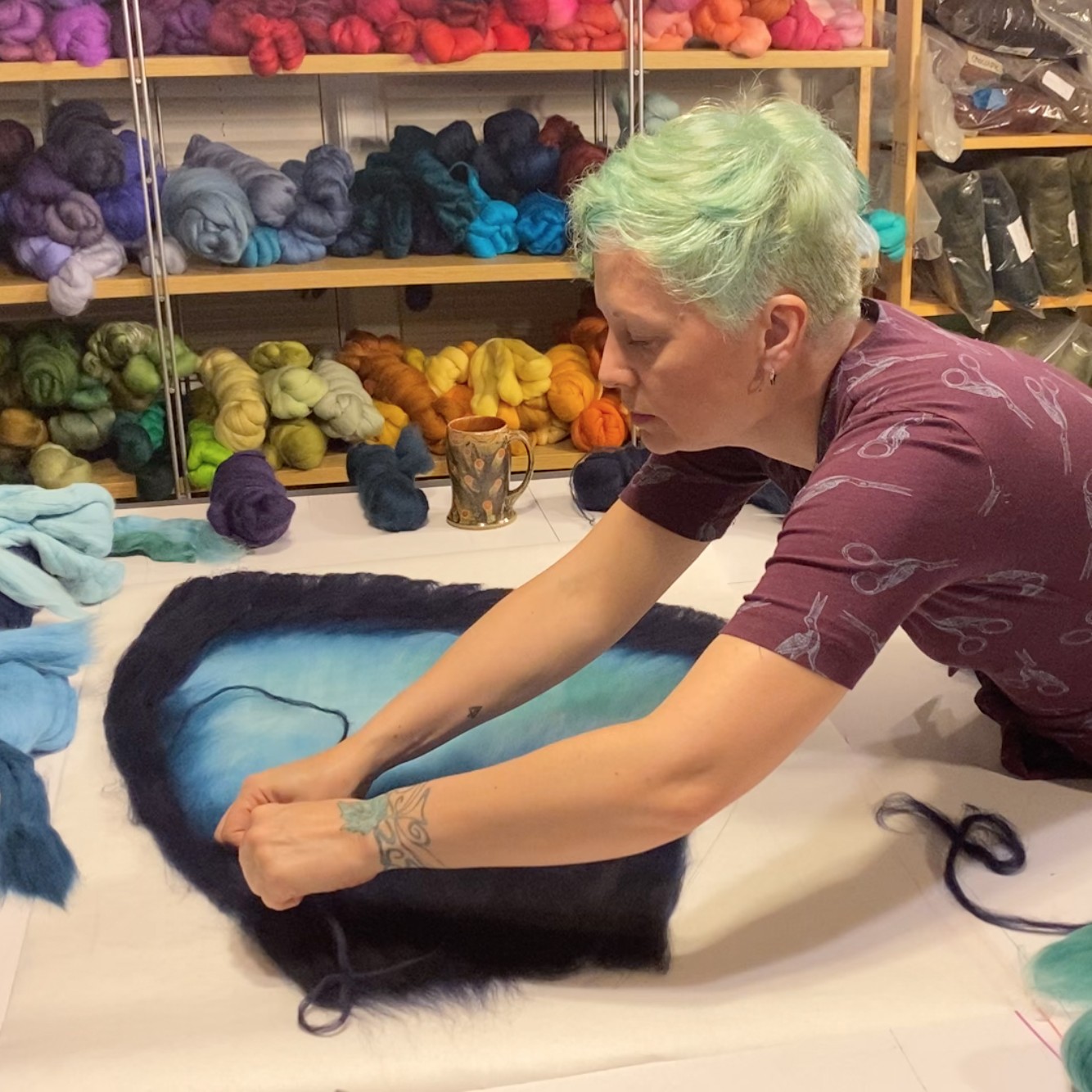

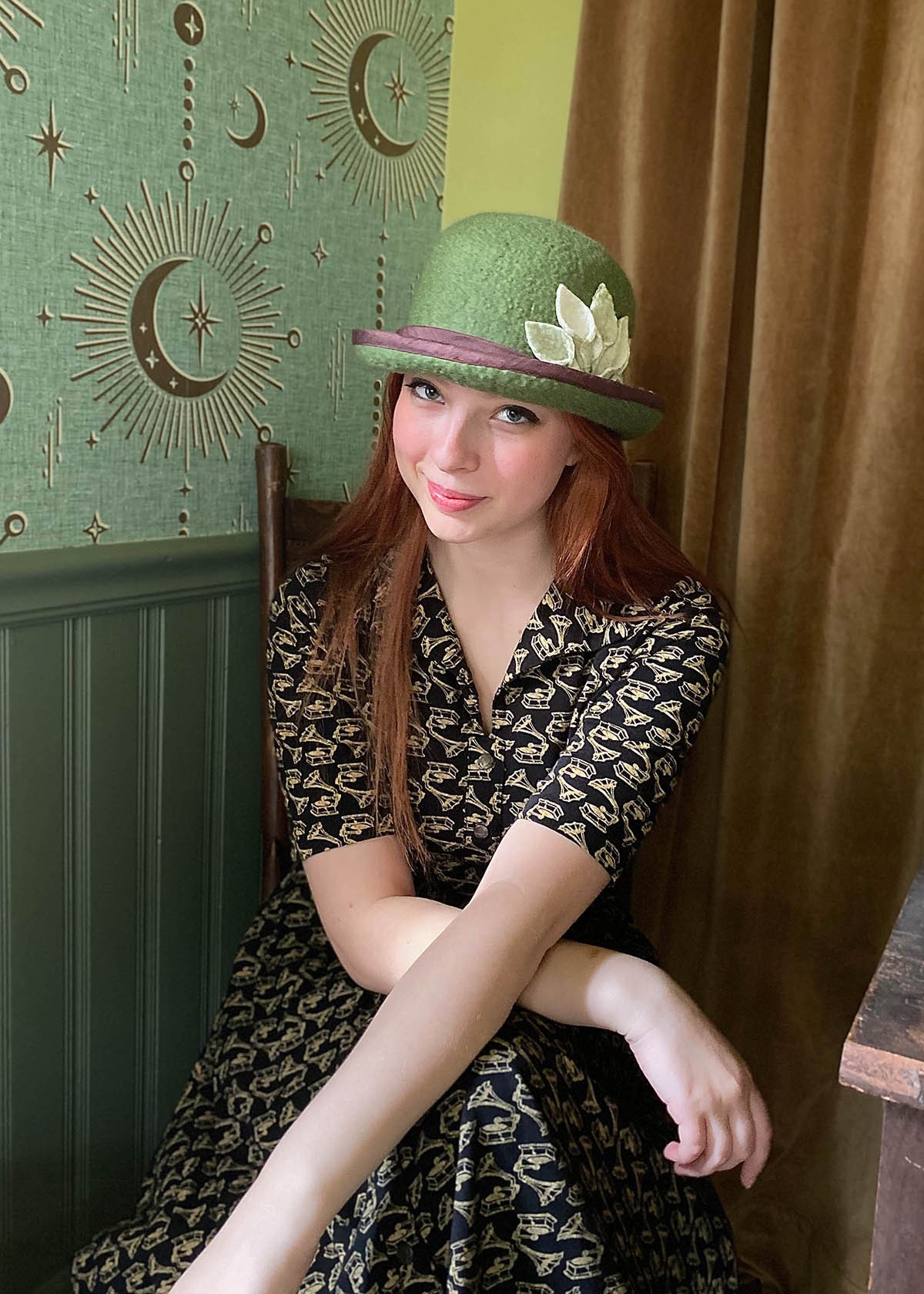
Awesome – so before we get into the rest of our questions, can you briefly introduce yourself to our readers.
I design and make hand-felted Merino wool hats and other accessories. My base material is called roving, which are the wool fibers that have been sheered from a Merino sheep, washed, dyed and combed. At least two layers of those fibers are laid over different 3D resists depending on what I’m making. The roving shrinks an average of 40% during the felting process so I have to start pretty large. Next the item is wet down with hot soapy water and partially felted inside and out using a power sander with a piece of vinyl attached where the sandpaper usually goes. After that it goes into the washing machine with a bunch of rubber balls to finish the felting process. This step has to be timed carefully so that each item shrinks to exactly the right size. Once felted, the hats are blocked and flat items are stretched and left to dry. Blocking the hats involves stretching them over wooden forms that are the same shape as the final product. This step requires a fair amount of hand and upper body strength to stretch the hat over the form. Once the hat is dry it will be taken off the form, any excess felt trimmed away and the finishing work is done by adding binding and hat wire to the brim, a band inside and any other details added for that specific design. What I love about the medium of felting is the endless possibilities of shape and color you can achieve. Most of what I sell is short run production work, meaning I come up with a design, figure out how to make it, write down how I made it and then reproduce that design in a variety of colors over the course of a few years. I also produce special one of a kind pieces throughout the year as well as custom items requested by customers.
I am primarily self taught. I learned some basic millinery (hat making) skills while studying costume design in college. Ten years later I took a 2 day course with an excellent professional milliner in San Francisco, but I taught myself to felt and several of my techniques are of my own design. I am proud of that but simultaneously prone to imposter syndrome and get very nervous when a ‘real’ milliner or ‘real’ felter comes into my booth at craft shows. I strongly believe there is no ‘wrong’ way to make something as long as it functions well and looks good (there is a reason I named my business Miss Fitt ) But, alas, I still live in fear of another artist walking into my booth and telling me what’s wrong with how I do things. (It’s only happened once in 24 years. Ok sort of twice but I think I held my own and the second person was actually very nice about it.)
My original line, launched in 2000, is a vintage inspired (primarily) ladies line which includes hats, fingerless mittens, flower pins, and various scarves. In 2014 I launched a second line called Moss Fete (rhymes with bet, french for festival) that is a literary fantasy inspired line. This is my fun stuff, like fancy witch hats, dragon scarves, and owl wing capes. I primarily sell via in person high end craft fairs and comic cons up and down the East coast and as far west as St. Paul MN. My secondary sales venues are Etsy under Moss Fete and my own website missfitt.com.
I love…what I do. Despite the fact that the difficulty of my work has taken it’s toll on my body over the past 24 years, nothing gives me greater pleasure than designing a really fun new witch hat in beautiful colors and then experiencing the delight of the customer who chooses it as their own. My husband recently started helping me out at comic cons and after the first one he said “Oh. I get it now. You make people so happy with the things you make. That’s why you keep doing this.”

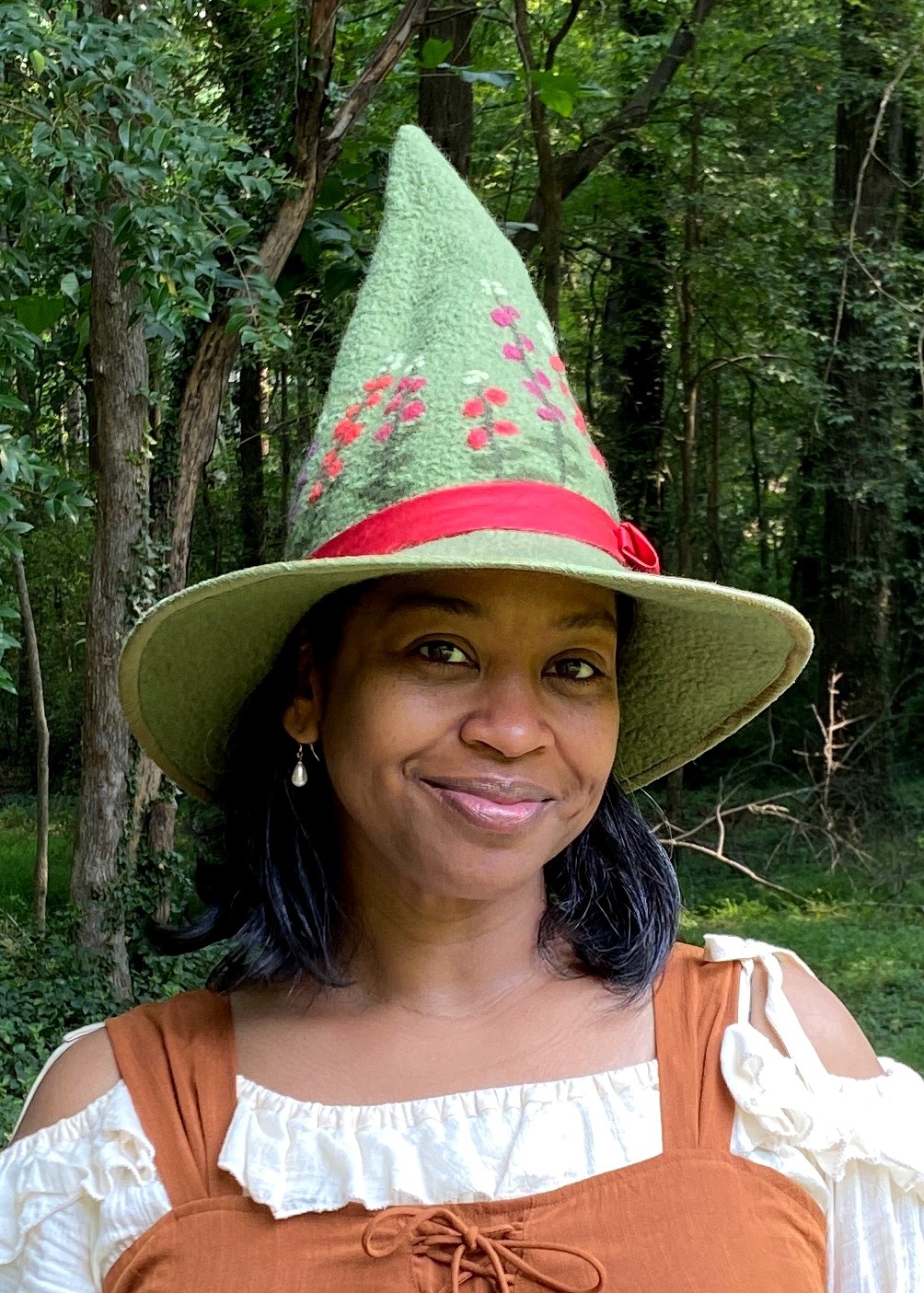
We’d really appreciate if you could talk to us about how you figured out the manufacturing process.
So this is kind of a funny story. Before I started making hand felted accessories for a living, I was doing general design and sewing for all sorts of clients. From wedding dresses and accessories to Burning Man and dance costumes to wardrobes for commercials. I also had a small ready to wear fashion line under the exact same label I still use today. I had learned to felt from a book my fiber teacher loaned me in college but had made exactly 2 hats and a pair of slippers (and at that, 9 years before this story begins). I had always been a hat collector and had made friends with the owner of a tiny hat store in my neighborhood. She saw the hats I had made in college and asked me if I could execute a line for her store. I said I’d try but didn’t think I’d do more than a few since those first two had been arduous to make. However, at this point the internet had been invented so there was a lot more advice available on how to felt things more quickly. Also, felting had gained enough in popularity that you could actually get the raw materials much easier. I made her about 15 hats. They sold out in less than 2 weeks. I thought, ‘Ooooh, ok, I guess I’m a hat maker now. I better figure out how to do this even faster.’ I searched out every tip I could find on how to make things easier and faster and still get the quality product I wanted. First I was doing it all by hand, and one at a time. Then I found this little hand cranked washing machine….now I could do 3 at a time but it’s still pretty arduous. Then I got a loan from my mom and bought a front load washing machine. Now I could do 8 to 10 at a time. It’s still a lot of work, but it starts to feel sustainable and this is a big turning point for the growth of my business.
I also had to learn how to make different hat shapes using wooden hat blocks. Hat blocks are super expensive so I had to learn to be inventive with the few that I could afford at first. I will say that starting with with almost nothing and learning how to do it on the fly pushed me to use what I had to hand and learn to be inventive with the tools I could afford. I would argue that scarcity is often the real mother of invention.

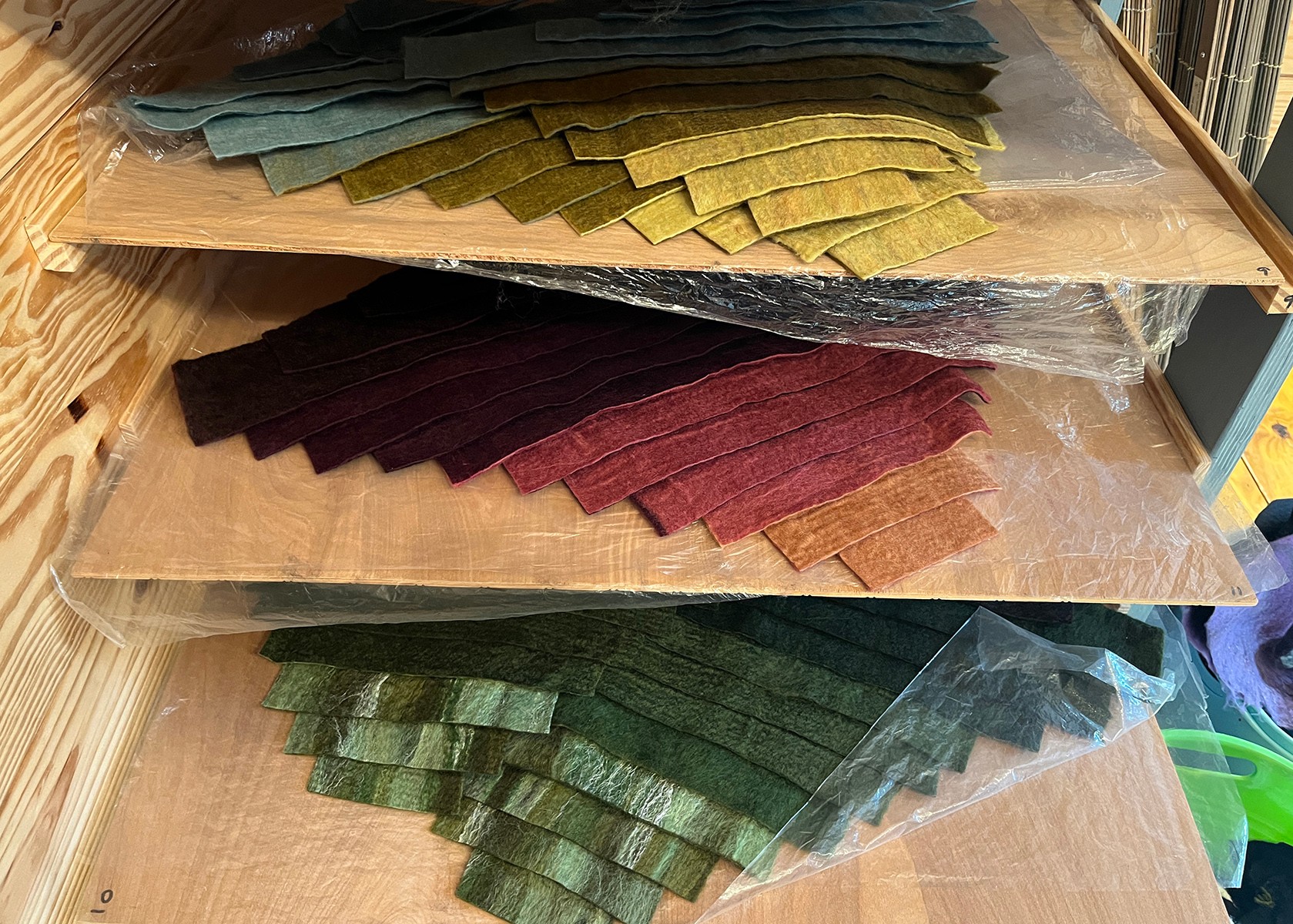
How about pivoting – can you share the story of a time you’ve had to pivot?
When I started this business, it was almost exclusively wholesale to small independent boutiques around San Francisco. Within a couple years, I was picked up by both the gift shop for the SFMOMA and a fashion sales rep based in LA. This is when things kind of got a little crazy. Very quickly I was making hats and scarves for small high end boutiques all over the country as well as larger affairs such as Henri Bendel in NY and Le Bon Marche in Paris (I know, it sounds like I’m making this up). I had as many as 10 people working for me at one point, but normally around 4. I was working 80 hour weeks and was very unhappy. It was hard to keep the quality control up. It was hard to hit deadlines. I didn’t really know my customers since they mostly interfaced with my sales rep (unless they were calling me to complain about that missed deadline. Yay!) Also, my creativity was stifled by what this very specific market was interested in buying. I was exhausted and tired of living hand to mouth. Selling my specific handmade products at wholesale while living in San Francisco was just not sustainable. I shut down my studio, moved with my husband to North Carolina, and committed to working with my step-father in high end wholesale jewelry manufacturing for at least 2-3 years. The minute I walked away from running my own even somewhat creative business, I knew I had made a terrible mistake. I missed being my own boss. I missed the comradery of my studio assistants. But I knew there was no way I could go back to the bone deep grind of my old business model. In the middle of the 2nd year of my tenure with my step-dad, a friend asked me if I’d be interested in selling some of my old Miss Fitt & Co. stock at a little local craft show. It went so well that I immediately started looking around for other opportunities like it. At one of those small craft shows, a customer told me I should apply to the American Craft Council shows. I applied and got into the Baltimore show, introducing me to the world of high end craft fairs. Which was scary, super awe inspiring and very quickly forced me to learn a new skill set of personal professionalism. By the end of that year I knew I could relaunch my company and support myself selling directly to the public this way. I..was..thrilled. I was able to be more creative. I knew who my customers were personally. I could work at a more manageable pace. I could build on this. I now have 2 full time and 1 part time employee and do about 16 in person shows a year.
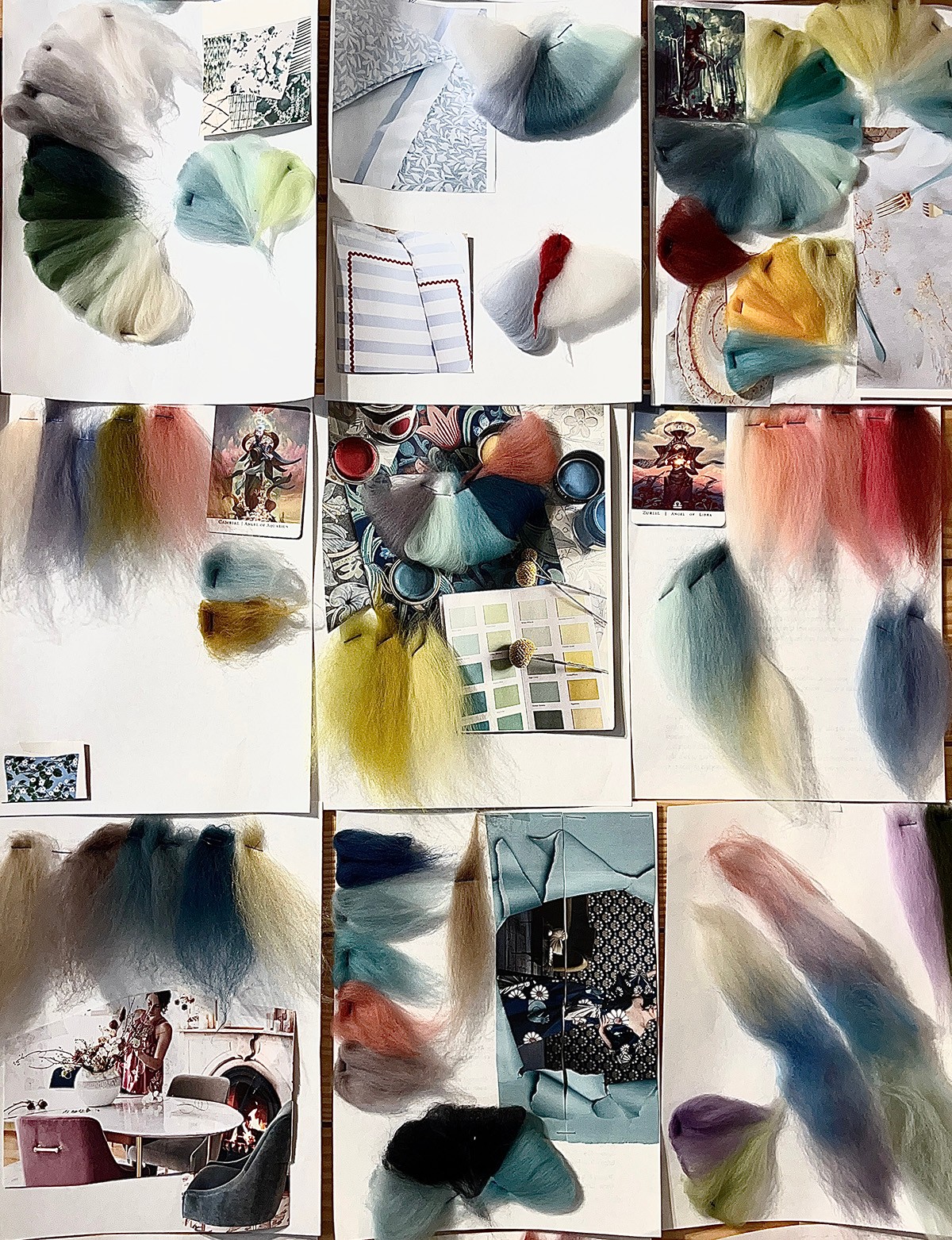
Contact Info:
- Website: https://missfitt.com/
- Instagram: https://www.instagram.com/missfitthats/
- Facebook: https://www.facebook.com/Missfitthats


